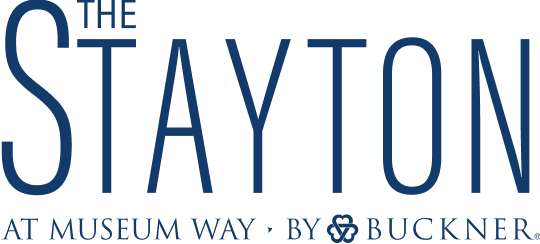Throughout every stage of life, your body will experience changes. One of the changes you may notice is a shift in your ability to balance as well as you used to. This can lead to an increased risk of falling, which can become especially serious as we age. According to the CDC, about “36 million falls are reported among older adults each year.” And “one out of every five falls cause broken bones or a head injury.” Serious falls can even lead to death.
However, there are many things you can do to improve your balance and prevent falls. Here are a few strategies from our team here at The Stayton to help you do just that.
Assess Your Fall Risk Factors
First, assess your fall risk factors so you can create a balance plan that targets areas you can improve. At The Stayton, we offer residents access to the VSTBalance and VirtuSense programs. These are automated fall-risk assessment tools that utilize artificial intelligence with machine vision to identify fall risk indicators.
In just a few minutes, this evaluation creates a report that assists residents in identifying early deficits in balance, gait and function. Treatment plans are then created using engaging biofeedback activities to help reduce falls and improve mobility.
This approach has been shown to:
- Reduce post-acute care falls by 73%
- Improved mobility for residents by 85%
Those without access to a risk assessment program like this can speak to a healthcare professional about possible alternatives for identifying their risk factors.
4 Strategies to Prevent Falling
- Make Changes to Your Home. Consider your home’s layout and features. Can lighting be increased throughout the house to better light your way? Do your staircases have railings that are comfortable and easy to grip when going up and down the stairs? Does your shower or bathtub need grab bars to help you safely get in and out? Small changes like these will help you avoid dangerous falls at home. If your home cannot be easily modified, it may be worth seeing if a move to a more accessible senior living community is an option.
- Exercise. Strengthening your bones and muscles through exercise can not only help improve your balance, but can help mitigate injury if you do fall. Lifting weights, water aerobics, walking, biking, and climbing stairs are all exercises you can do to strengthen your body. However, be sure to talk to your doctor if starting any new exercise regime.
- Increase Your Flexibility and Mobility. Engaging in activities like yoga and Pilates will help you become more flexible and gain a wider range of motion. If you stumble, your body may also be able to react more quickly to prevent a fall.
- Get Regular Check-Ups. Changes in your eyesight can affect your depth perception, which can also impact your balance. In addition, many medications may have side effects that make a fall more likely. Be sure to attend regular check-ups with your doctor and discuss any concerns you may have.
What to Do if You Fall
Sometimes, no matter how careful you are, you may experience a fall. Here is what to do if that happens.
- Examine Possible Pains, Sprains or Aches. The first step to take is to see if you are experiencing any pain. Pain may be an indication that you’ve sprained, fractured or broken something that needs to be attended to.
- Get Up Slowly. After a fall, you never want to get up quickly, even if you are not experiencing pain. Instead, roll over to one side and pause before getting up. The National Institute on Aging reports “getting up too quickly can cause your blood pressure to drop which can make you feel wobbly” possibly leading to another fall. If you’re unable to get up by yourself, use nearby furniture for assistance.
- Call a Loved One, Caregiver or 911. If you’re in intense pain or unable to get upright, contact your loved one or caregiver immediately. You can also call emergency services to take you to the hospital. Do not wait for your condition to worsen.
Explore Lifestyle Options at The Stayton
At The Stayton, we’re dedicated to helping residents get the most out of every day. We work with each individual to craft a custom wellness plan focused on pursuing their passions, and personal health goals. Residents also get access onsite to VirtuSense and VSTBalance, a rehabilitative technology that reduces falling risks by improving balance and increasing mobility through biofeedback activities.
To learn more about what sets The Stayton apart from other senior living communities, please contact us.
